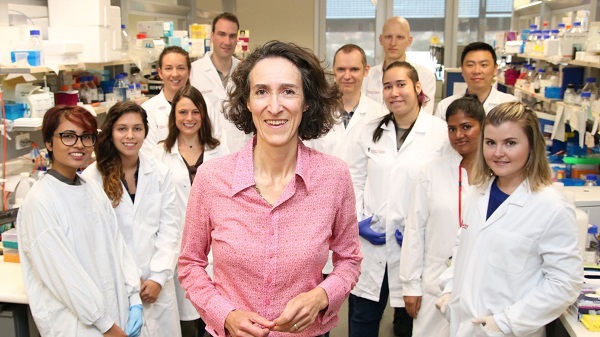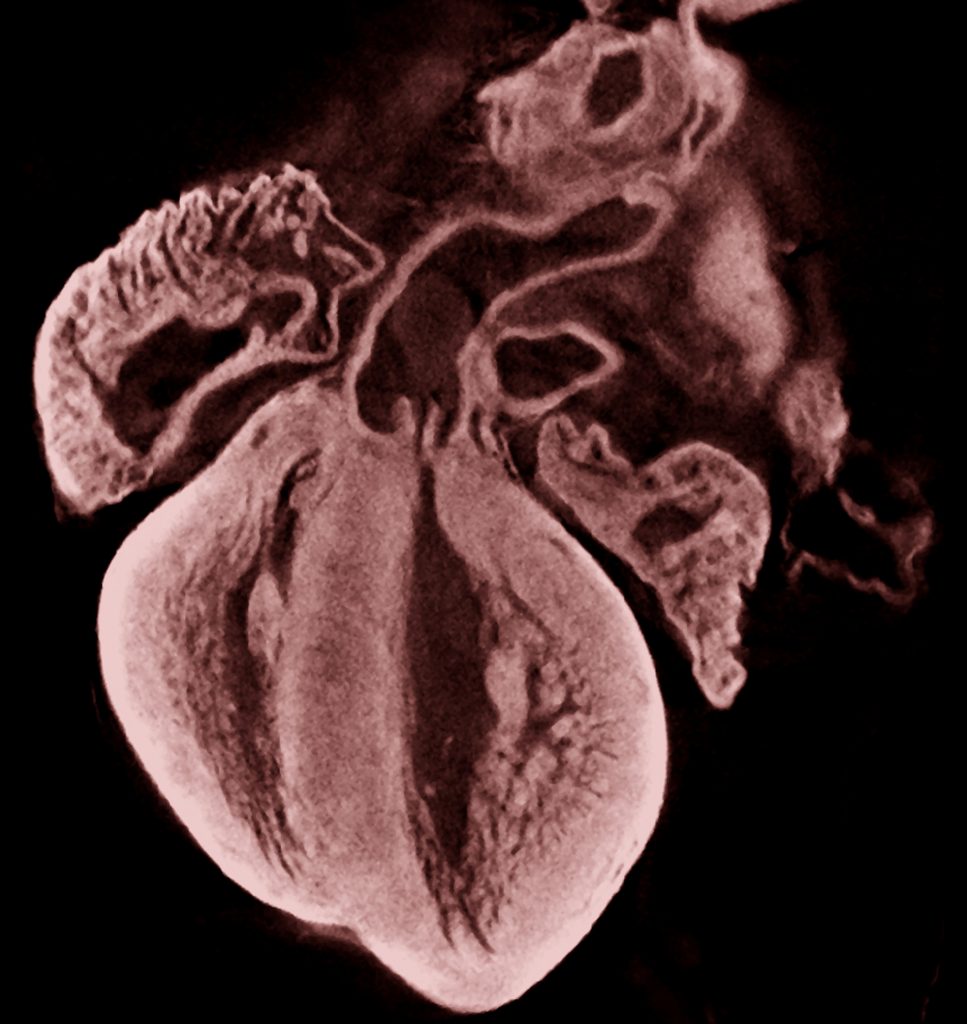The heart of the matter
Almost 1% of babies are born with congenital heart diseases, for which the cause is unknown. Research supported by NSW Health has pinpointed a cause for some of these previously baffling conditions.
Mutations in two genes known as HAAO and KYNU have been shown to cause congenital heart defects in babies – elusive information that was only discovered thanks to a NSW Health Sydney Genomics Collaborative research grant.
Professor Sally Dunwoodie, Head of the Chain Reaction Program in Congenital Heart Disease Research at the Victor Chang Cardiac Research Institute, says the world-leading research then went on to show in mouse models that even if mutations in those genes are present, the heart can still be correctly formed if the mother’s diet is supplemented with vitamin B3 (or niacin).

The uncovering of KYNU and HAAO’s role was the result of 12 years of research that culminated in a body of information that could help thousands of families who have a child with a congenital heart defect. “Just under 1% of live-born babies are born with a heart defect. “So heart defects are a big issue,” Dunwoodie says.
Surprising finding
“In our research we usually find mutations in genes that are known to be involved in heart development, but these were unknown genes to us – they were not like any other gene known to be involved in heart defects.” KYNU and HAAO usually help convert an amino acid called tryptophan into a substance called NAD, which has roles including energy production and repairing DNA.
Throughout the world, previous studies have looked at the genes of individuals affected by congenital heart disease. But this study of 97 people with congenital heart disease was different in that their entire genome was examined (not just the 2% found in the genes), along with that of their parents and sometimes their siblings. “There are 6 billion pieces of genetic code per person,” Dunwoodie says.
After KYNU and HAAO’s role was identified, the same mutations and defects were reproduced in mice. Adding vitamin B3 to the pregnant mouse’s diet was discovered to prevent the defects appearing in offspring. “This is obviously very exciting,” Dunwoodie says. “It’s very rare to find a mutation, and then to find the mechanism behind it and understand it. Then it’s even more rare that we get to find a possible treatment.” The team is now trying to identify how many women might be low in NAD levels and would potentially benefit from increasing their vitamin B3 intake.

Unanswered questions spur researchers on
Unfortunately, the specific mutations identified do not explain the vast number of babies born with congenital heart disease. The NSW study established genetic causes for almost a third of the cases, which is more than previous studies, but that still left 70% with unknown genetic causes. Dunwoodie says some cases might be caused by mutations in several genes. Others could be a result of environmental factors. “Was the mother exposed to high glucose levels, pollutants, prescription medication, etc?” she says.
And yet those families in which the cause can now be identified are filled with relief to finally have a diagnosis. “Some parents have said to me, ‘We’ve been searching for an answer for 20 years. We’re so grateful to you.’”
Determining a genetic cause can help some women settle the troubling question as to whether it was something they did or didn’t do during pregnancy, and make informed decisions about having more children.
“We might be able to say that the gene is involved not only in heart development, but that it also has a role after birth in heart muscle function throughout life. This means that the child might get a heart muscle disease or an arrhythmia later, so it gives doctors an understanding as to what could happen in the future. The cardiologist knows to check this child regularly.”
Since the initial study of 97 individuals, a total of 160 patients and their relatives have now had their full genome explored, Dunwoodie says, and they are continuing to find answers for more and more families. “We are incredibly grateful for the funding from NSW Health. We’ve made a lot of discoveries that have continued to have an impact on these families.”
Updated 4 years ago